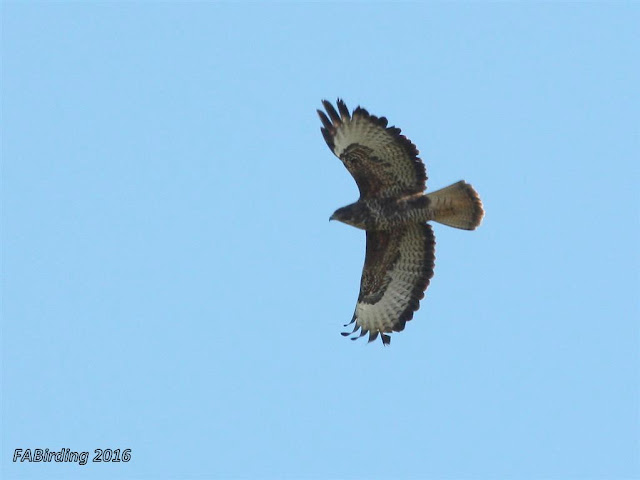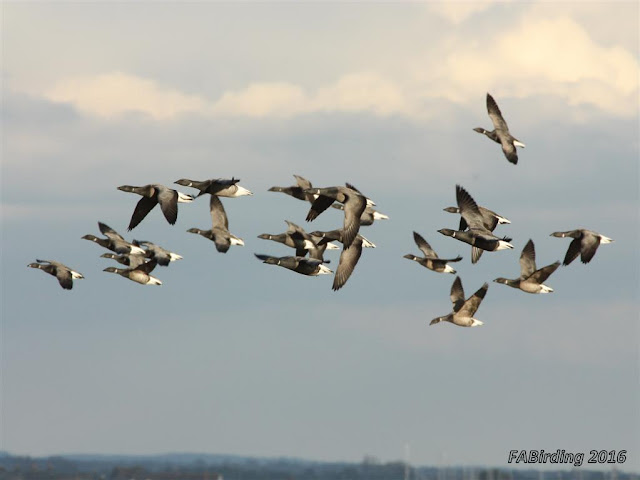 As a follow up to my previous post
As a follow up to my previous post 13 hardy souls joined me on Sunday morning, with the temperature hovering just a few degrees above freezing point and a very strong north-easterly wind, for the scheduled Surrey Bird Club walk around Farlington Marshes LNR.
Due to the weather conditions I didn't find many opportunities for additional photos during this walk so some inclusions are of those species seen but captured during my recce visit last week.
A scan over the extensive mudflats produced our first sightings, albeit distant, of six different waders.
 |
| Views around Farlington Marshes LNR. |
The inland pool was nearly devoid of any water fowl but it did enable us to get much better views of the elegant male Northern Pintail in all it breeding finery.
 |
| Male Northern Pintail. |
Trying to unsuccessfully get out of the gusty wind we followed the stream which enabled us to get reasonably close to the Brent Geese and plenty of Black-tailed Godwit, many beginning to show signs of their breeding colours.
 |
| Black-tailed Godwit with Teal. Brent Geese, Black-headed and Herring Gulls |
Moving on to the eastern sea wall with the tide well on the turn provided more views of waders including Dunlin, Turnstone, Grey Plover, Ringed Plover and Oystercatcher.
 |
| Grey Plover, Knot, Dunlin and Turnstone. |
Scanning the inland marsh when a flock of Lapwing and other species took flight I spotted a very small falcon, probably a Merlin, but it disappeared before any of the group could see it!
 |
| Lapwing. |
 |
| Brent Geese, Pintail, Oystercatcher and Shelduck. |
Along the western sea wall a couple of Pipits tested our ID skills as they flew up briefly and then disappeared back into the waterside vegetation. With perseverance we eventually identified them as Rock and a Water Pipit ... nice additions to the day list.
Finally a couple of images of the most numerous species seen throughout our walk the Dark-bellied Brent Geese.
List of my sightings:
Blackbird, Common Buzzard (2), Coot, Carrion Crow, Curlew, Dunlin, Little Egret, Black-tailed Godwit, Goldfinch, Greenfinch, Dark-bellied Brent Geese, Canada Geese, Great Crested Grebe, Little Grebe, Black-headed Gull, Common Gull, Herring Gull, Grey Heron, Lapwing, Magpie, Mallard, Red-breasted Merganser, Merlin, Moorhen, Oystercatcher, Northern Pintail, Rock Pipit, Water Pipit, Grey Plover, Ringed Plover, Redshank, Robin, Shelduck, Northern Shoveler, Skylark (heard), Common Snipe, Starling, Stonechat, Teal, Turnstone, Wigeon, Woodpigeon, Wren. [44].
Linking to Wild Bird Wednesday.























































